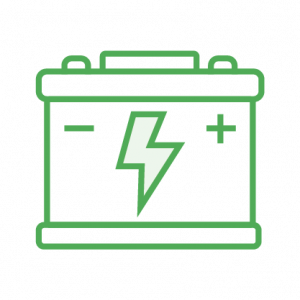Cold weather can make driving a little trickier, but if you know how to take care of your car this winter, you’ll be in good shape.

Cold weather causes battery power to decrease, making it a little harder to start and run your car in the winter. Make sure to check your battery and replace one that’s less reliable before the temperatures drop too much. Before cranking your car, you should also turn off the heater, stereo, and other auxiliary gadgets.

It seems like you wouldn’t need your car’s cooling system during the winter, but you do. And extreme cold can do a real number on it. Make sure to flush the system every two years and maintain a balanced coolant-to-water ratio (which keeps your engine from corroding or freezing).

Cold weather doesn’t so much harm your brakes as it does your braking. It’s harder to brake in cold weather, partially because the roads are often icy and partly because the colder temperatures make the brake pads harder. So it’s crucial those brake pads are in good working condition.

When air gets hot, it expands. When it gets cold, it contracts. That means you need more air in your tires during the winter to maintain the same pressure. Too little air means extra wear and tear on your tires that can lead to blowouts. Check the inside of your driver-side door for the recommended tire pressure or the after-market manufacturer.

This applies to most places in the US, but especially in northern states: winter weather increases the chances of being stranded in a vehicle. Before the weather begins its plunge toward zero, pack a winter emergency bag. This should include a blanket, gloves, an auxiliary battery/charger, a small snow shovel, water, an ice scraper, a flashlight, jumper cables, non-perishable snacks, a tire replacement kit, a first aid kit (which you should already have), and kitty litter.
Also, keep your gas tank over halfway full and your EV batteries charged as much as possible. If you are stranded in your vehicle, having a full tank and a full battery will increase the time you can remain safe and comfortable while waiting for help to arrive or while working to resolve the problem yourself.

Car seats work best when the straps are snug against your child. Puffy jackets on top of extra winter layers can make a car seat less effective, exposing your child to more risk in the event of an accident.
To avoid this, remove large overlayers before buckling them in. They can still wear a light jacket over a few smaller layers in their car seat. And you can keep a blanket in the car that you can place over the seatbelt.